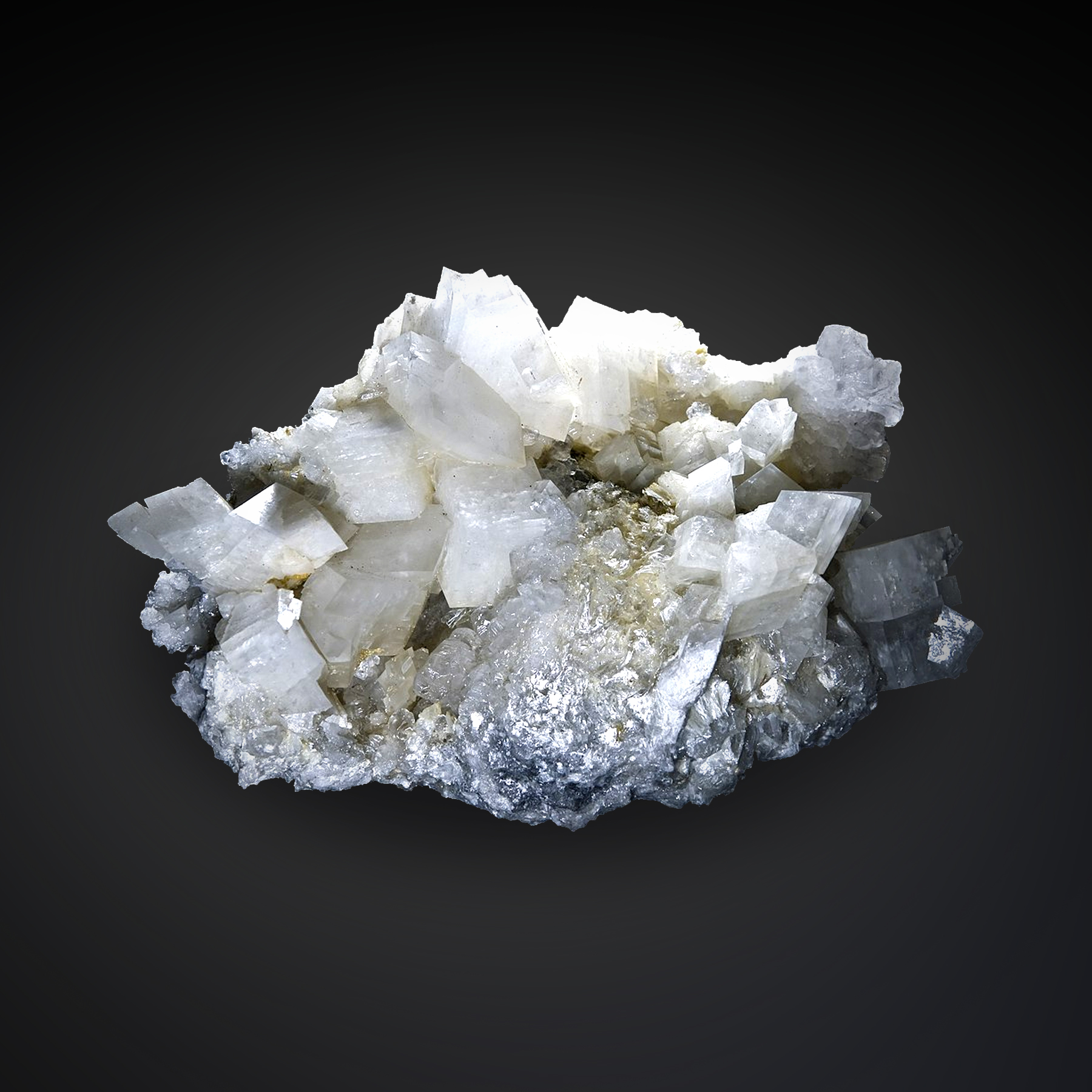Dolomite Mineral
Dolomite was named for the French mineralogist Deodat de Dolomieu. The mineral dolomite is commonly found in deposits of a sedimentary rock called dolostone. There are two types of materials often called dolomite, a true chemically uniform calcium magnesium carbonate with the chemical formula CaMg(CO3)2, and a dolomitic limestone, which is just an irregular mixture of calcium and magnesium carbonates.
Dolomite is believed to have formed by replacement of some of the calcium in a calcium carbonate limestone deposit with magnesium, while the sediment was undergoing lithification, being converted from layers of dead clam and other sea animal shells into crystallized calcite or calcium carbonate. The resultant dolomite mineral, CaMg (CO3)2 is a true double salt. The calcium and magnesium ions in dolomite exist in separate layers in the crystal matrix. Dolomite has a calcium layer, then a carbonate layer, then a magnesium layer then a carbonate layer, and so on.


- Uses of Dolomite
The inherent differences between dolomite and calcite drive the applications for dolomite. Dolomite is chosen for many construction and building product applications due to its increased hardness and density. Asphalt and concrete applications prefer dolomite as filler for its higher strength and hardness. Dolomite also finds use in a number of applications as a source of magnesium such as glass and ceramics manufacture, as well as a sintering agent in iron ore palletisation and as a flux agent in steel making. Farmers use dolomite for agricultural pH control. The chemical industry uses the mineral dolomite in making magnesium salts including magnesia, magnesium oxide (MgO), which is used in pharmaceuticals.
As an industrial mineral, dolomite usage is significantly less than calcite. This is primarily due to the relative lack of high brightness deposits of dolomite. The alteration process that forms dolomite tends to bring in additional impurities that reduce brightness or tint the stone brown or grey. In regions where high brightness dolomites do exist, they share many of the applications of calcium carbonate.
- Safety Precautions
- Higher degree of purity, wet ability and whiteness.
- Our natural dolomite is popular for its shear and compressive strength.
- Fire resistive and solid.
- Long lasting life and stiffness is the strength of our mineral dolomite.
- Specifications
| SPECIFICATIONS | DOLOMITE |
| CaO | Min. 30% |
| MgO | Min 20% |
| SiO2+ AL2O3 | Max. 4% |
| Na2O + K2O | Max. 0.02% |
| Size | 40 – 80 MM |
| Moisture | Max 2% |
| Packing Type | 40 Kg / bags |
In dolomite, the calcium and magnesium ions exist in separate layers in the crystal matrix, thus allowing several dolomite uses.
- Burnt/Calcined Dolomite is used for Refractory
- Dolomite is widely used in Iron & Steel Industries due to its strength and compatibility in process of purifying Iron & Steel.
- Used as a substitute of lime for construction and building products White Dolomite powder as a filler for asphalt and concrete, paints, plastics, rubber, soaps and detergent applications For adhesive formulation.
- Dolomite is also used in some cement, pharmaceutical, fodder, Glass and ceramic industry as a source of magnesium As a sintering agent in iron ore palletisation or as a flux agents in steel making.
